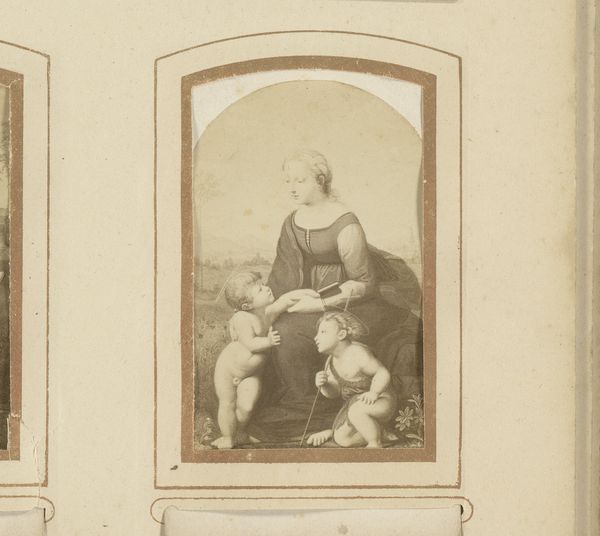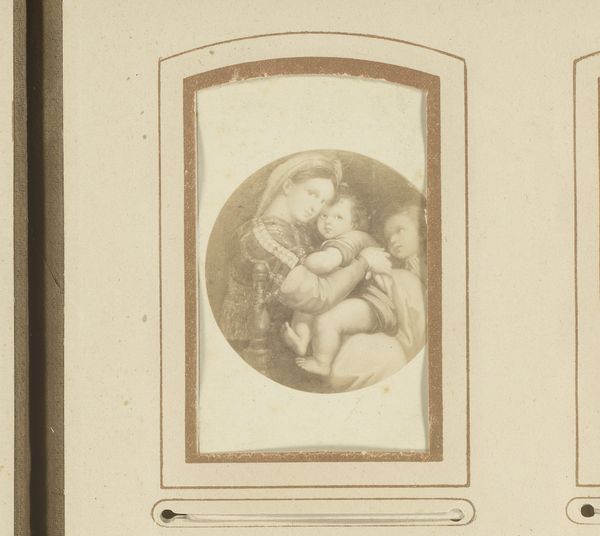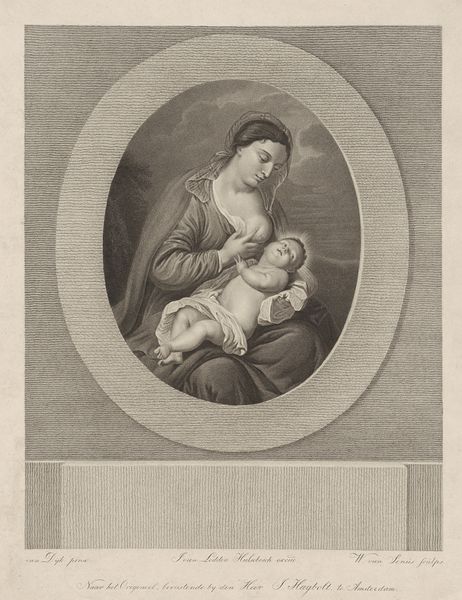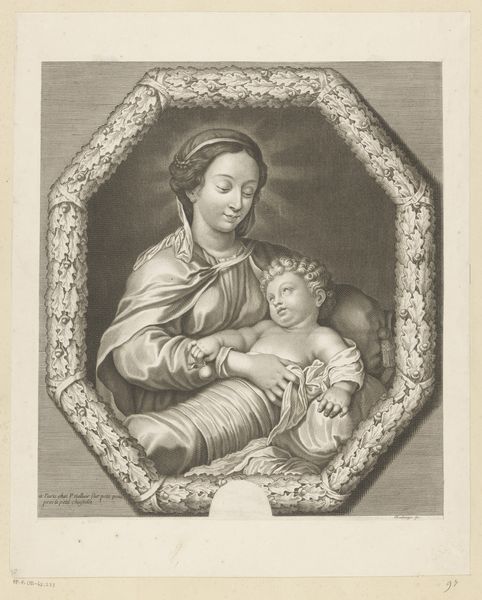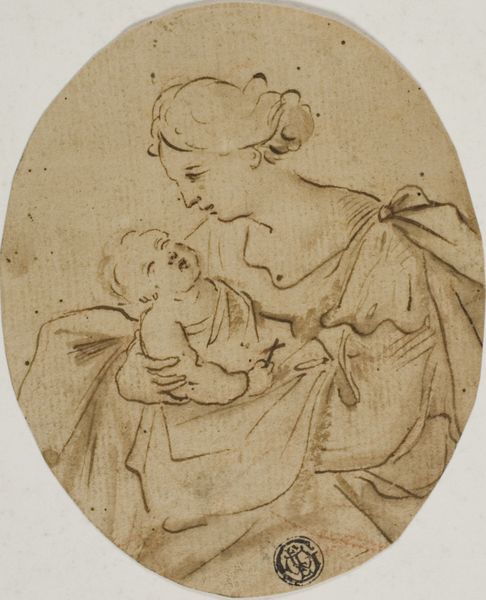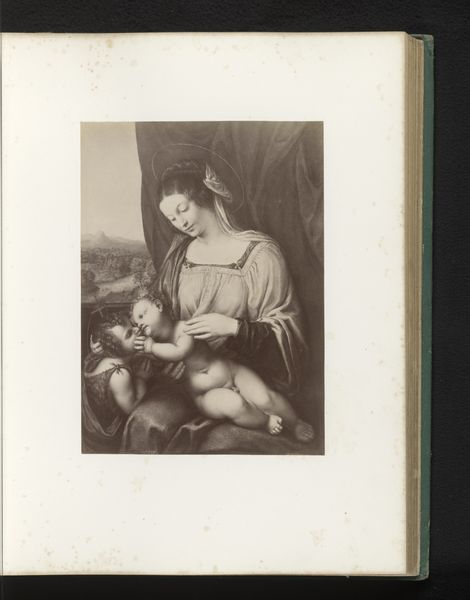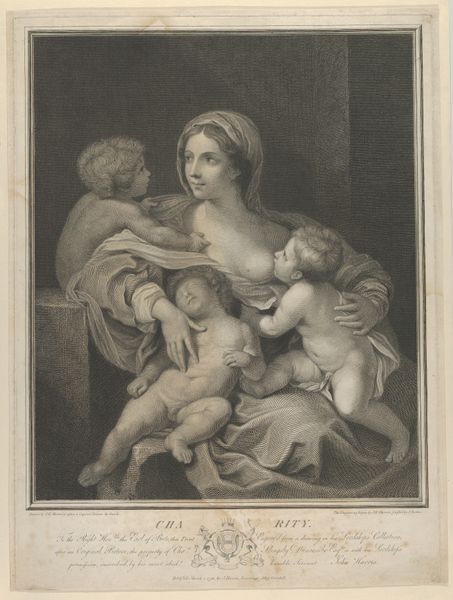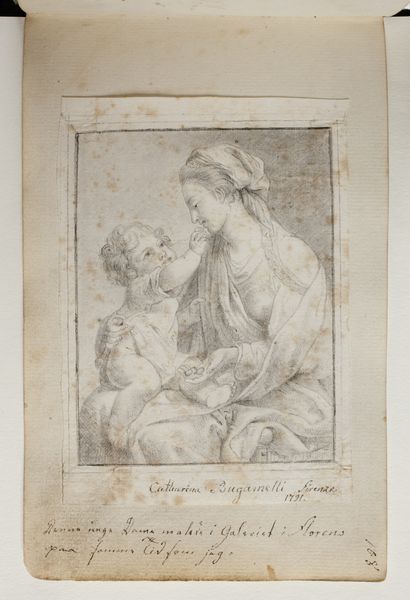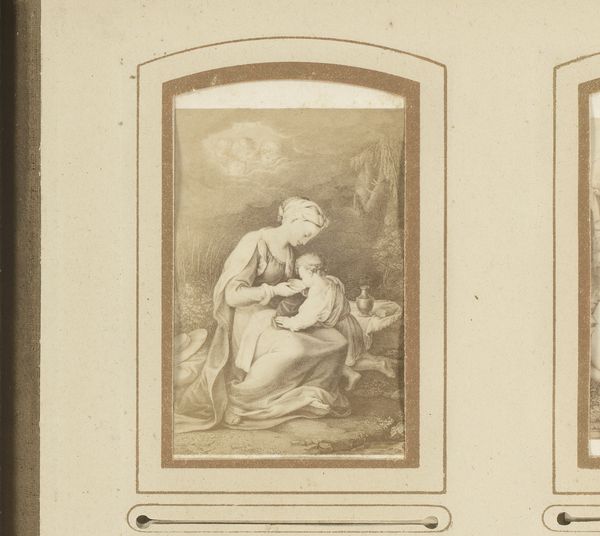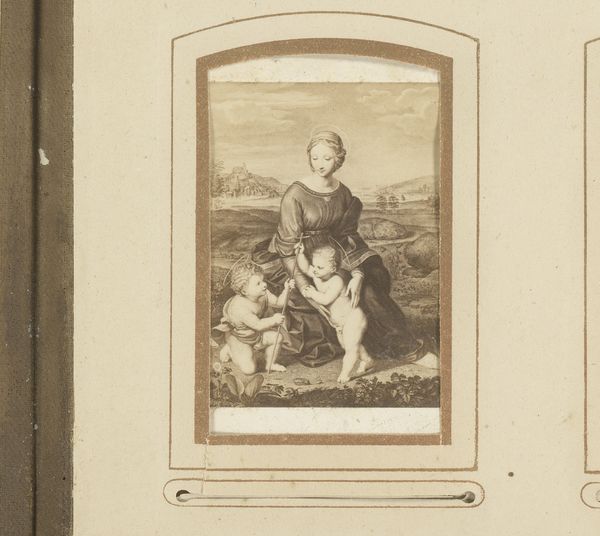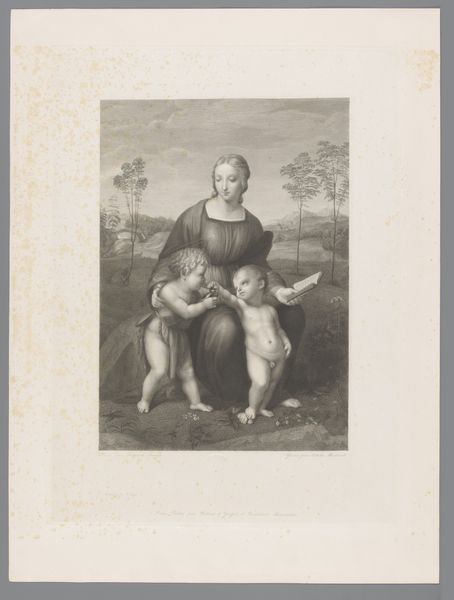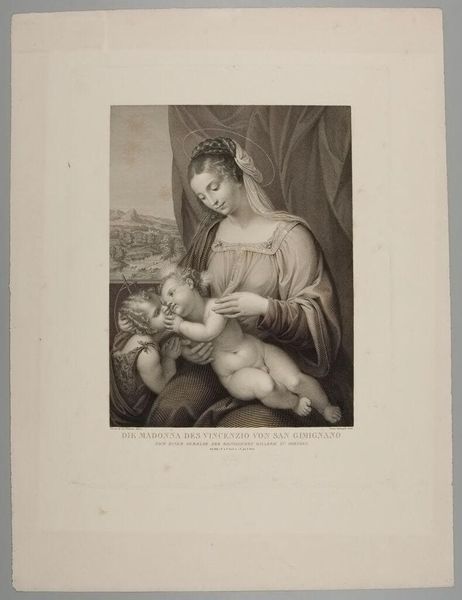
photography
#
photography
#
history-painting
#
realism
Dimensions: height 81 mm, width 50 mm
Copyright: Rijks Museum: Open Domain
Curator: Looking at this piece, the immediate sensation is one of stillness. It's muted, almost dreamlike in its sepia tones. The framing suggests it's one image extracted from something larger. There is an interesting sense of removed calm. Editor: Indeed. This is a photo reproduction of Raphael’s "The Bridgewater Madonna", created sometime between 1850 and 1900. Made during the explosion of the Realist style and new photography practices. And this one bears the unmistakable stamp of Gustav Schauer, though what feels almost devotional about that initial calm to me is precisely part of how its own history and meanings now might also strike the contemporary eye as oppressive in its time. Curator: Oppressive? That’s a strong word! I see tenderness. I mean, look at the soft, almost blurring light. Editor: I hear you. But think about it: the idealization of motherhood, the Madonna as the epitome of feminine virtue—these images, while aesthetically pleasing to some, served and continue to serve as powerful tools in shaping gender roles and expectations of all womankind and especially women from marginalized and colonized communities! That halo seems now a cage! Curator: A cage... well, that’s certainly one way to put it. I suppose when placed in the context of how these images have historically been used... Editor: Exactly. In a time when we are fighting for reproductive justice, for trans rights, for recognition of diverse family structures, this photograph reproduced from what in its time tried also to appear and make something immutable raises questions. To be fair, though, Schauer and others thought they could help spread awareness of old masters. Curator: So, the original intention of bringing art to the masses is, perhaps, complicated by its afterlives. A reproductive justice framing is vital here. Even if one does appreciate, I suppose, the composition itself! Editor: Precisely. This photograph pushes us to be really reflexive when we look at any visual or aesthetic choices, which inevitably speak to historical conditions that are anything but simple or apolitical! Curator: So, beyond the initial impression, digging deeper reveals complex, even contradictory layers... making you really sit and think. I appreciate that. Editor: Likewise, engaging these "stillnesses" or historical inheritances, even if uncomfortable, allows for much richer discussions of both then and now.
Comments
No comments
Be the first to comment and join the conversation on the ultimate creative platform.
